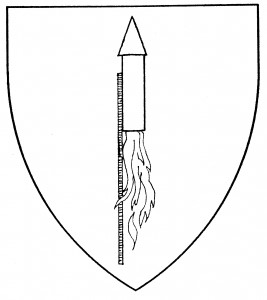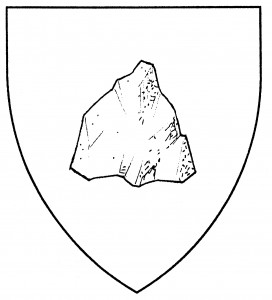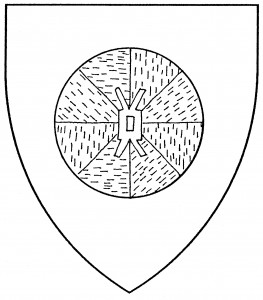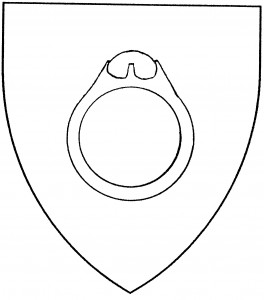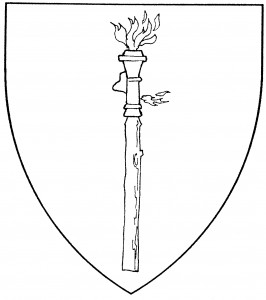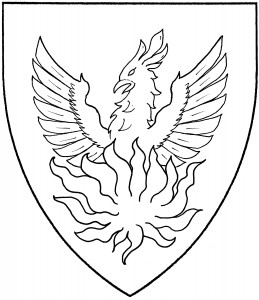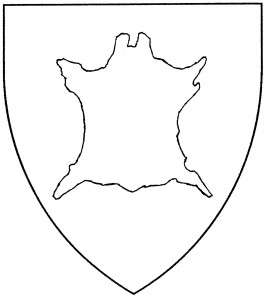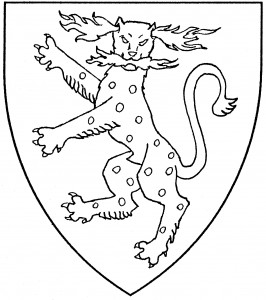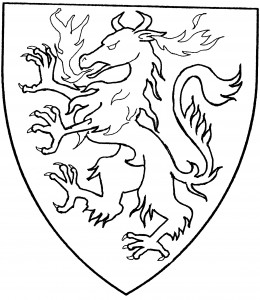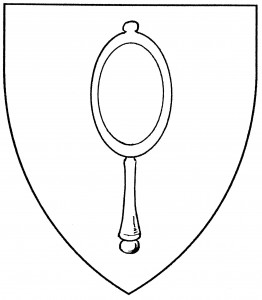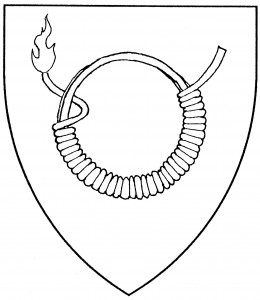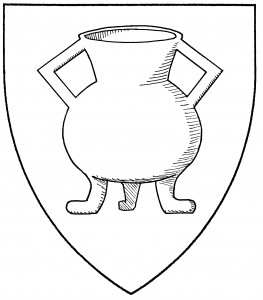
Fleshpot, or posnet (Period)
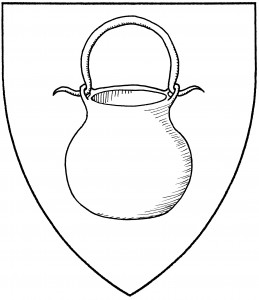
Cauldron (Period)
A pot is a round vessel, usually of metal, intended to hold food. In medieval armory, the default form of pot is two-handled and three-legged; it is more fully called a “fleshpot” or (in the Randall Holme roll, c.1460) a “posnet”. This form is found as early as c.1370, in the arms of von Spanheim [Gelre 44].
Another common form of pot was the “cauldron”: more spherical in shape, with a bail handle, which may be called its defining trait. The cauldron is hung over the fire by its handle to cook food; it’s sometimes called a “cooking pot” for that reason. The cauldron is a period charge, found as early as c.1340 in the arms of Diessenhofen [Zurich 153]. In Society armory, it is sometimes drawn with a fire beneath it, or hanging from a tripod: the arms of Larrea, mid-16th C., show a cauldron so suspended [Armeria 358].
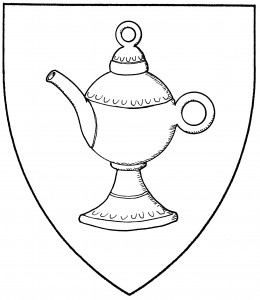
Spouted pot (Period)
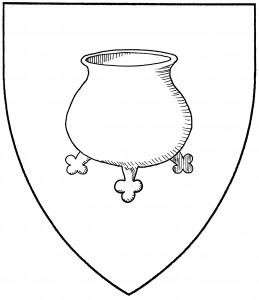
Three-footed pot (Accepted)
There is also the “spouted pot”, called a pot à verser in French, used for storing and pouring liquid. It’s found in the canting arms (German Weinkanne) of Schilling von Cannstatt, c.1450 [Scheibler 131; also Siebmacher 112]. The default form is with a single spout, facing dexter; two-spouted pots are also found, in the arms of von Stedenberg or Stettenberger, c.1450 [Ingeram 158, 269; also Siebmacher 104]. (The same French term, pot à verser, is also used for a slightly different pouring vessel, made of earthenware rather than metal. This variant, blazoned in German as a Weinkrug, is found in the arms of von Prackbach, 1605 [Siebmacher 93].)
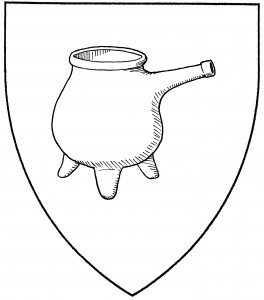
Pipkin (Accepted)
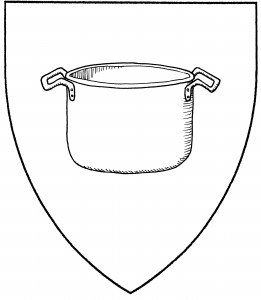
Kettle (Accepted)
Of the various pots unique to Society armory, we find the “three-legged pot”, like the cauldron but three-footed and without a handle; the “pipkin”, a ceramic cooking vessel with three feet and a long handle, dating to the 15th Century; and the “kettle”, a metal cookery pot, not spherical like the cauldron, but wider than it is deep, with a lifting handle on both sides. No difference is granted the various types of cookery pots.
There is also the “clay pot”, not metal but pottery: a flat-bottomed, wide-mouthed crock (much like a modern flower-pot).
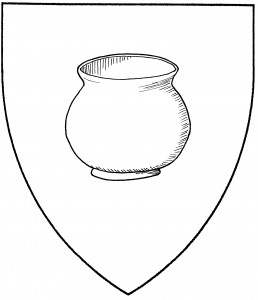
Clay pot (Accepted)
For related charges, see amphora, caldera gringolada, frying pan, ink bottle (ink pot), pitcher, vase (urn). See also cat (in its curiosity).
Aubrey Ericsdatter bears: Sable, three cauldrons Or.
Agnes Berengarii de Gerona bears: Vert, five cauldrons in saltire Or.
Brekke Franksdottir bears: Sable, a cooking pot hanging from a tripod above a base in flame argent.
Roberto Valason bears: Argent, a peacock in its pride azure gorged of a pearled coronet argent between two barrulets between two spouted pots reversed vert.
William Taylor the Pure bears: Per pale purpure and vert, a bear’s leg palewise issuant from base Or, maintaining a clay pot argent.
Claire le Potter bears: Per bend sinister gules and azure, a kettle argent and a bordure Or.
Dametta of Arundel bears: Per pale purpure and sable, a gryphon segreant maintaining a chalice, on a chief argent three posnets per pale purpure and sable.
Parlane of Glenord bears: Pean, on a three-legged pot argent two dolphins haurient respectant sable.
Mons von Goarshausen bears as a badge: Issuant from a pipkin sable a flame gules.
